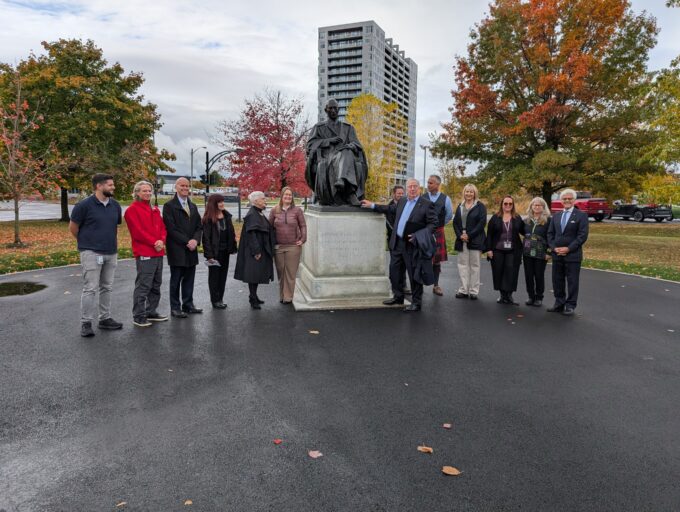After researching my great-grandfather, Henry Barnett, at Birmingham Archives, I became curious about his early life. My starting point was the 1861 census—the first in which he appears.

A Village in the Staffordshire Hills
Henry was born in 1856 in Ellastone, a small Staffordshire community near the Derbyshire border, where the River Dove winds through rolling hills, fertile farmland, and scattered woodlands. This pastoral landscape supposedly inspired George Eliot’s fictional village of ‘Hayslope’ in her 1859 novel Adam Bede.
The Barnett Family
In 1861, five-year-old Henry lived with his parents and siblings—a family of eight headed by William Barnett, who worked as both tailor and grocer, and his wife Mary. The children ranged from 22 years old to 3 years old. Older offspring had already left. Age gaps suggest some infant deaths—a common tragedy of the era.
As a tradesman, William would have valued education. Their son, also named Frederick, was 18 and nearing the end of his five-year term as a pupil-teacher at the village school, located across from the church near the family’s home on Church Lane.
A Stable, Rooted Community
Ellastone was remarkably stable in 1861, with a population of just 269. Nearly three-quarters of residents were born in the village itself, and many surnames in the census appear in earlier generations of the Barnett family tree, evidence of deep, multi-generational roots.
Only 50 people were born outside Staffordshire and Derbyshire. Of these, 39 came from other English counties, seven from Ireland (including the Vicar of Ellastone), three from Scotland (including a farm bailiff and his wife), and one from Wales.
Occupations and Village Life
The Genealogist is currently the only genealogy service that has extracted occupations from the 1861 census, which reveals the economic fabric of the village.
Unsurprisingly, agricultural labourers were the most common, with 15 listed. This was followed by farmers (13), farmers’ wives (9), farmers’ sons (7), and agricultural labourers’ wives (5).
The village also supported an array of tradespeople: joiners, carters, grocers, tailors, butchers, bricklayers, nurses, and others—though no baker or candlestick maker! Three teachers served the community (not counting the pupil-teacher), and one man held the combined role of Railway Station Master and Registrar of Births and Deaths. The railway station itself was a mile away, across the River Dove in Derbyshire.
A Fading Way of Life
Village life in 1861 reflected rural rhythms and close-knit community ties, set against the backdrop of agricultural labour and the enduring presence of the residents of the “big house” and village church. But this way of life was already beginning to fade. By 1901, Ellastone had lost about a quarter of its population as people, including Henry Barnett, moved away to seek opportunities in growing urban centers.
 The most recent census released for England and Wales, taken on Sunday 19 June 1921, is now available as a transcript to MyHeritage subscribers. There are 38,335,681 entries.
The most recent census released for England and Wales, taken on Sunday 19 June 1921, is now available as a transcript to MyHeritage subscribers. There are 38,335,681 entries.







 Sussex Burials
Sussex Burials Before online databases took over, the Genealogical Research Directory was essential for connecting family historians. If you’ve got old volumes gathering dust, they may still be valuable research tools. Now, Ancestry has some of them online.
Before online databases took over, the Genealogical Research Directory was essential for connecting family historians. If you’ve got old volumes gathering dust, they may still be valuable research tools. Now, Ancestry has some of them online.